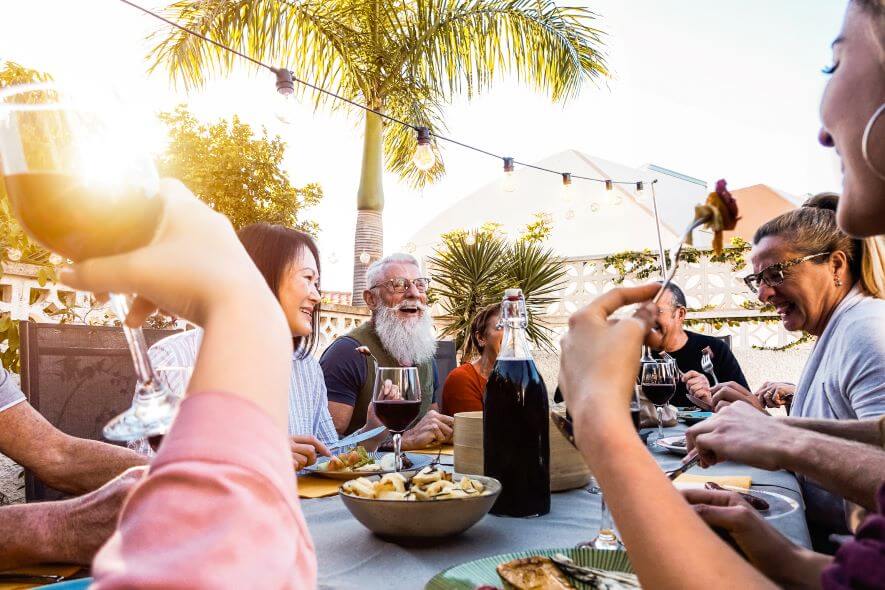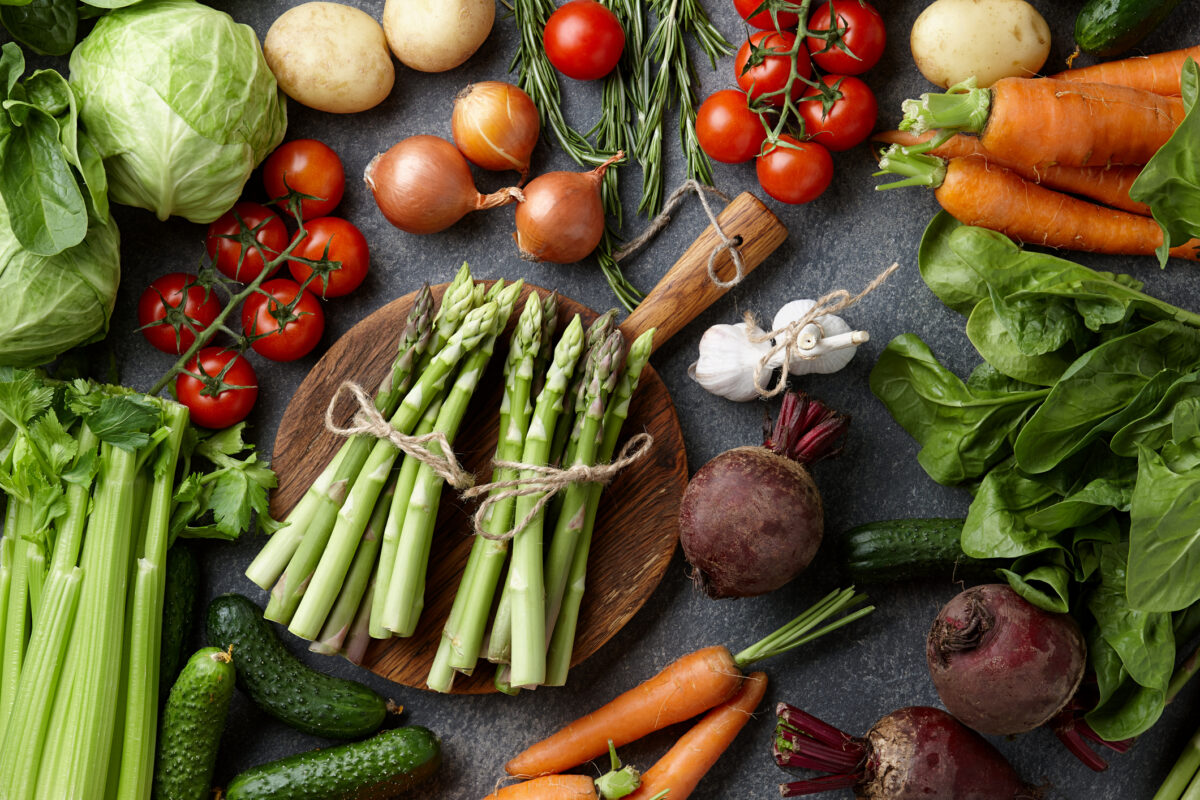There are so many popular diets these days that it can be difficult to sort fad from functional, especially when your best friend, relative, or neighbor swears by their fancy new way of eating.
Finding a diet that helps you develop better eating habits is extremely beneficial, and special diets are especially necessary for those with certain medical conditions. But there’s no magic bullet, according to Dr. Steven Schimpff, who is writing a book on aging gracefully through healthy living. Instead, healthy living involves following a healthy eating plan you can stay on for life, exercising, reducing stress, and sleeping well. “The agenda should be overall health and wellness,” he says.
Here’s a guide to help you learn more about the pros and cons of four popular diets.
Gluten-Free Diet
A gluten-free diet requires avoiding foods that contain the protein gluten. In a nutshell, that means that you don’t eat anything containing wheat, barley, rye, or triticale, a grain made by crossing wheat and rye. You’ll also need to avoid all flours made from these grains. What can you eat on a gluten-free diet? Anything without gluten—including fresh fruits and vegetables; eggs; most dairy products; unprocessed meat, poultry, and seafood; and gluten-free grains, such amaranth, quinoa, and teff.
It seems simple to put together meals and snacks from these options, but it might surprise you to know that many, many foods contain gluten. If you’re on a strict gluten-free diet, you’ll need to steer clear of baked goods, cereal, pasta, and most beer. But gluten can hide in unlikely places, including lunch meat, canned vegetables, dressings, and sauces. In short, you’ll need to look for whole foods that are naturally gluten-free and processed foods that are expressly labeled gluten-free (or become an expert at reading ingredient lists).
People with celiac disease, a genetic autoimmune disorder, must follow a gluten-free diet because for them, consuming gluten can lead to small intestine damage, says Christy Brissette, a dietitian and president of 80 Twenty Nutrition, a nutrition and food media company.
“For anyone with celiac disease, a gluten-free diet is an absolute necessity,” she states. There is also a small group of people who have gluten sensitivity and experience fatigue, headaches and/or digestive issues when they eat foods that contain gluten, Brissette adds. “There is no test for gluten sensitivity, but seeing a dietitian can help you determine if your side effects could be linked to gluten or other foods” she explains.
Although a gluten-free diet isn’t inherently healthier than a diet containing gluten, eliminating most or all processed foods, baked goods, and pastries from your diet can have beneficial effects, Schimpff notes. Replacing these foods with gluten-free whole grains like amaranth, millet, quinoa, and wild rice, along with fiber-rich vegetables like squash and sweet potatoes, can lead to weight loss and better overall health.
Just remember that swapping the empty gluten-filled calories you cut for gluten-free cookies won’t lead to a healthier, slimmer life. Some gluten-free products are low in fiber and high in sugars and starches, just like their gluten-containing counterparts. “Just because a food is gluten-free does not mean it’s healthy,” Brissette warns.
Keto Diet
A ketogenic diet, also known as a keto diet, is a form of low-carbohydrate diet in which carbohydrates are restricted to the point that the body goes into a state known as ketosis. In ketosis, the body burns fat instead of glucose for energy. “This metabolic shift makes this diet effective for rapid weight loss,” Brissette says.
With a keto diet, you’re generally limited to less than 50 grams of carbohydrates per day, which is the equivalent of about three slices of bread. Some strict followers of the diet try to reduce their carb intake even lower—to 30 grams or fewer. What’s nice about this diet is that it provides very clear guidelines about what to eat and what to avoid so that calorie counting sometimes isn’t necessary, Brissette notes. On a keto diet, you can eat red meat, poultry, seafood, butter, cheese, Greek yogurt, berries, nuts, and non-starchy vegetables.
However, the pluses of a keto diet are outweighed by many minuses. The diet can be low in fiber if dieters don’t eat enough vegetables to make up for the lack of fruit and whole grains, which can lead to chronic constipation. It can also negatively affect the healthy bacteria in your digestive tract that help boost your immune system, Brissette says.
Following a keto diet for medical reasons is a different story. Doctors may prescribe keto diets to some patients for medical reasons (e.g., children with epilepsy. A keto diet has been shown to reduce seizures.)
Otherwise, many experts recommend steering clear of this restrictive diet, especially if you’re older. “If you’re over 55, be especially wary of the ketogenic diet,” Brissette warns. It can put extra stress on the kidneys and may also increase the risk for osteoporosis, she adds.
In addition, this diet should not be attempted by anyone on medication that lowers blood sugar or blood pressure without talking to a doctor first, according to Brissette. “You need to be closely monitored when you’re on these meds because, combined with the keto diet, they can lead to low blood sugar and fluctuations in your blood pressure that could make you dizzy or faint, or be potentially dangerous,” Brissette cautions.
Paleo Diet
The Paleo Diet is another type of low-carb diet. It encourages eating the foods our ancestors supposedly would have eaten. The Paleo Diet allows grass-fed meats, seafood, eggs, fruits, vegetables, nuts, seeds, and select oils, including avocado, coconut, flaxseed, olive, macadamia, and walnut oils. Practitioners of the Paleo Diet are to avoid any grains (including whole grains), dairy products, legumes, potatoes, refined sugars, processed foods, refined vegetable oils, and salt.
“On this diet, processed foods and sugary drinks are out,” Brissette says. “Overall, the emphasis is on healthy, minimally processed foods, which is a great philosophy for eating well.” Cutting sugar is a huge benefit of this diet, Schimpff notes, adding that the average American eats over 30 five-pound bags of sugar per year.” We don’t know it because it’s tucked into everything,” he explains.
However, the Paleo Diet isn’t perfect. “Cutting whole grains and legumes out of your diet isn’t based on evidence,” Brissette cautions. Research shows that regularly consuming these foods may help lower your risk of colorectal cancer, heart disease, obesity, and type 2 diabetes, she adds.
Also, eating large amounts of red meat is associated with higher risk of heart disease and some types of cancer. “Further, the claim that the Paleo Diet is the way our ancestors ate has been disproven,” she says. “And who wants to live like a caveman or cavewoman?”
The Paleo Diet is not the same as a ketogenic diet, but the two diets do overlap. In general, the Paleo Diet is less restrictive than a keto diet. But followers of the Paleo Diet can reduce their carb intake to a level that induces ketosis. That can be achieved by cutting fruit, switching from root vegetables to cruciferous vegetables and leafy greens, and adding fat by having more coconut oil and egg yolks.
It’s important to note that some people misinterpret the idea behind low-carb diets, taking it as license to gorge on meat and fats. “It doesn’t mean you go buy a pound of bacon and eat it this afternoon,” Schimpff advises.
Vegan Diet
A vegan diet eliminates all animal products, including meat, poultry, seafood, eggs, and dairy products. In the strictest definition, a vegan diet also doesn’t allow bee pollen and honey because they come from insects.
Vegans avoid many packaged foods due to hidden animal-based ingredients. For example, vegans do not eat prepared foods that contain animal ingredients like casein, whey, gelatin, or isinglass, a substance made from fish. Common foods that might contain non-vegan ingredients include cookies, pastries, dressings, pesto, and Worcestershire sauce, which often contains anchovies.
Well-planned vegan diets can be incredibly healthy when they focus on the right balance of whole foods such as beans, whole grains, and plenty of fruits, vegetables, nuts, and seeds. “Plant-based protein is linked to living longer and a lower risk of many chronic diseases,” Brissette explains. However, it’s important to know that if you decide to follow a vegan diet, you may need to take supplements, including vitamins B12 and D, omega-3 fatty acids, calcium, iodine, iron, and zinc.
And believe it or not, it is possible to eat an unhealthy vegan diet, especially if you’re getting too little protein or too much sugar and refined carbs. Here, a vegan diet would not help with overall health or safe weight loss. “I’ve counseled vegans who have gained weight when they started this diet because they were eating mostly carbs and not enough protein and healthy fats to keep them satisfied,” Brissette notes.
Check With Your Doctor First
Does one of these diets appeal to you? If so, it’s a good idea to talk to your doctor before adopting a new plan. Have a physical to rule out any health concerns that would prohibit you from following a certain diet, Brissette recommends. Brissette also says that, “If you do want to make a change to your diet to lose weight, see a dietitian to help you make sure you’re getting all of the nutrients you need for optimal health. It can be tough to be well-nourished on a calorie-reduced diet.”
Another Option for Health and Weight Loss
If you’re interested in improving your overall health but you’re not keen on a restrictive diet, consider healthy eating Mediterranean style. That’s what Brissette and Schimpff recommend. It involves consuming a diet rich in vegetables, legumes, whole grains, seeds, and nuts, along with fish and some poultry. In addition, you limit red meat intake, eat very little sugar, and use olive oil as your main oil.
If you follow the Mediterranean style, you may lose weight naturally because you will be consuming nutrient-dense food that’s not heavy on calories but makes you feel full. “That’s a diet that’s been demonstrated to help people lose weight, keep it off, and be healthier over the long term,” Brissette says.
And if you’re not looking to adopt a specific eating plan, just try to choose healthier foods 80 percent of the time. This can help you stick with healthy eating, Brissette advises.
READ MORE: Heart-Healthy Foods and You: How to Get Started
Disclaimer: This article is meant for informational purposes only and does not constitute medical advice. Always consult your doctor before changing your diet or starting a new exercise regimen.






